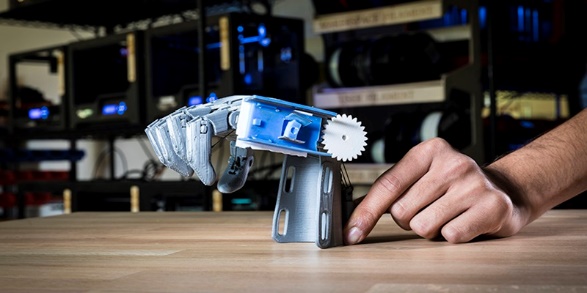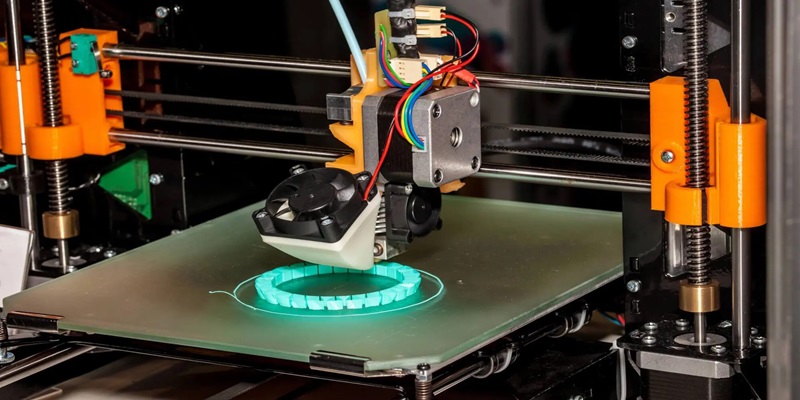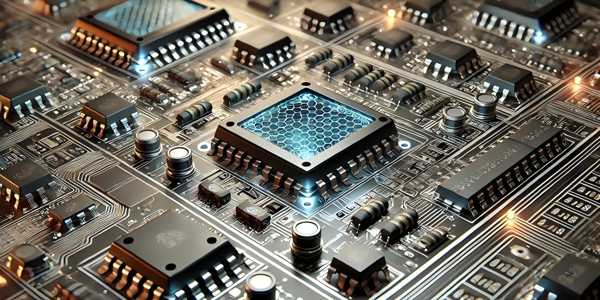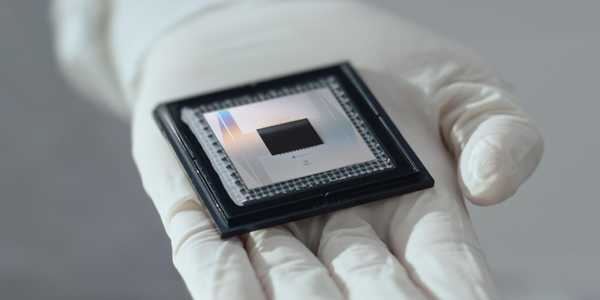Exploring the Cutting Edge of 3D-Printed Electronics
Author: Elison
As you transition into 3D-printed electronics, you will enter a universe where usability and innovation harmonize perfectly. 3D printing technology is transforming electronic device development, production, and customizability. It no longer restricts itself to metal and plastics alone; conductive materials can be 3D printed, and electronic parts can be printed with full function. Rapid prototyping, personalized gadgets, and 3D-printed electronics have become a reality, opening doors for industries in new and exciting directions.
The Rise of 3D-Printed Electronics
A Revolutionary Breakthrough
3D-printed electronics have become a breakthrough in the age of manufacturing. 3D printing and electronic parts combine in a technology that opens doors for new avenues of development and production. Complex, custom electronic gadgets can now be produced in one run, cutting down assembly times and expenses.
Use in Industries
The use of 3D-printed electronics is having a profound impact on industries. In aeronautics, you will witness lightweight, custom-designed parts that boost plane performance. Medical gadgets gain with patient-specific designs, improving therapy success. Consumer electronic gadgets have become personalized and ergonomic in shape and form. Even cars can use 3D-printed electronics for smart, connected cars in the future. As technology continues to unfold, even newer and newer avenues of use will become apparent in years to follow.
How 3D-Printed Electronics Works?

The Additive Manufacturing Process
3D-printed electronics use additive techniques in 3D printing to produce electronic gadgets with full function, layer for layer. 3D printing involves printing conductive and insulative materials in specific patterns to form circuits, sensors, and other parts. Unlike conventional electronic part production, 3D printing allows complex structures and custom forms that could not have been produced in the past, neither economically nor practically feasible.
Materials and Methods
The key to 3D-printed electronics is in the materials involved. Conductive inks with metal particles (e.g., silver or copper) and polymer-based dielectric materials combine to form the electrical pathways and insulation requirements. Several printing techniques are utilized, including:
• Fused Deposition Modeling (FDM) for structural parts
• Inkjet printing for high-resolution conductive ink deposition
• Aerosol jet printing for high-fine resolution
Integration of Components
One of the greatest strengths of 3D-printed electronics is directly integrating electronic parts into printed structures. Integration can involve embedding sensors, antennas, and even batteries in the device. The result is a lighter, smaller, and possibly more durable electronic device.
Post-Processing and Functionality
The printed electronic devices then undergo post-processing operations such as curing and sintering to make them conductive and durable enough for use. What is produced can range from simple circuits to complex, multi-purpose, intelligence—and connectivity-enriched devices with intelligence and connectivity capabilities embedded in them.
Benefits of 3D-Printed Electronics
Flexibility and Customization
3D-printed electronics have no equivalent in terms of customizability. Complex, one-off structures can be designed, and electronic parts can be inserted directly into structures. Product development can become incredibly flexible, with new and unimagined forms and structures becoming a reality that is unachievable with conventional processes and techniques.
Fast Prototyping and Iteration
Perhaps one of the greatest strengths of 3D-printed electronics is its rapid prototyping and iterative development capabilities. Engineers can develop and perfect an idea in days, not weeks, and sometimes even in a single day, not a week, for that matter. Rapid development and prototyping enable rapid development and delivery, and at a reduced cost, no less, for traditional prototyping techniques and processes.
Lower Waste and Environmental Impact
3D printing is an additive technology; therefore, it utilizes materials only for the finished part. Hence, it creates less waste in a significant proportion when compared with traditional subtractive fabrication processes. In addition, printing parts in situ reduces unnecessary inventories, shipping and storing them, and its carbon footprint in shipping and storing them.
Miniaturization and Reduced Mass
3D-printed electronic circuits allow one to produce lighter and smaller parts. By inserting electronic circuits in part, bulky enclosures and connectors can be avoided. Miniaturization is most beneficial in aerospace, automotive, and wearable technology, in which dimensions and weight become critical factors.
Applications of 3D-Printed Electronics in Real Life

Consumer Electronics
3D-printed electronic circuits are transforming the field of consumer technology. With 3D printing, companies can produce custom-shaped gadgets with inbuilt circuits, sensors, and antennas. With such technology, one can produce custom-designed smartphones, wearables, and smart home gadgets. For example, a few companies produce 3D-printed earbuds that are customizable, fit perfectly in a wearer's ear canal, and have built-in speakers and microphones.
Medical Devices
The medical field is employing 3D-printed electronic circuits to create new medical technology and develop new medical devices. Experts are producing personalized prosthetics with inbuilt sensors that provide real-time feedback to the wearer. 3D-printed electronic patches for tracking critical medical information and dispensing drugs have been produced, providing a noninvasive alternative to medical technology.
Aerospace and Defense
For use in aerospace, 3D-printed electronic circuits allow one to produce lightweight parts with built-in functions. With 3D printing, complex networks of sensors and antennas can be printed and seamlessly incorporated into an aeroplane structure. For use in defense, 3D printing technology is utilized for creating custom-designed communications gadgets and parts for drones that are lightweight and high-performance in function.
Automotive Industry
Automakers are experimenting with 3D-printed electronics to improve car performance and driving pleasure. From printed boards in car dashboards to body sensors, 3D printing is opening doors to smarter and more efficient cars. Some companies even utilize 3D-printed batteries and capacitors to use full energy in electric cars.
The Future of 3D-Printed Electronics

Redeveloping Manufacturing
3D-printed electronics can redefine manufacturing. With 3D printing, complex, custom electronic parts can be printed at unprecedented efficiency and velocity. As technology evolves, we can explore a transition towards localized, demand-pushed electronic parts and device fabrication.
Enhancing Design Capabilities
The versatility of 3D printing introduces new electronic design capabilities. With 3D printing, engineers and designers can produce complex, multi-layered circuits and unorthodox form factors that could not have been produced in the past, at least not practically and economically. With such a breakthrough, electronic gadgets can become lighter, smaller, and more efficient.
Challenges and Possibilities
The future of 3D-printed electronics is full of potential but has obstacles. Higher-resolution printing, new conductive materials, and constant quality maintenance are areas for future studies. As such barriers fall, new applications in consumer goods, aeronautics, and medicine will follow.
A Look at the Future of Electronics Manufacturing
As 3D-printed electronics mature, you can bet your boots to see new and exciting applications in industries everywhere. With personalized consumer gadgets and custom-made aeronautics parts, 3D printing will redefine electronic devices and part creation forever. Knowing about current breakthroughs will give you a head start in taking 3D-printed electronics to your future ventures and ventures.



